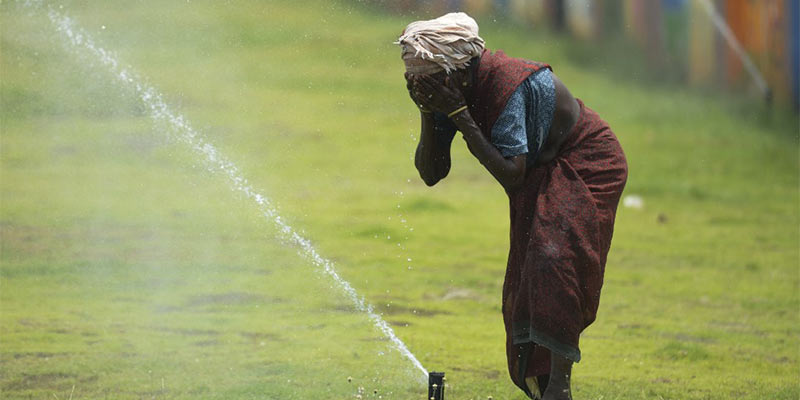- India
- May 31
What is wet-bulb temperature?
• Two days ago, Delhi’s Mungeshpur logged a maximum of 52.9°C, the highest ever temperature recorded in the city, even as the India Meteorological Department said it is examining sensors and data of the area’s weather station for any potential error.
• The national capital and large swathes of north India have been reeling under heat wave conditions for the past few days.
• When high temperature is coupled with a higher percentage of humidity, it will lead to an increase in wet-bulb temperature.
What is wet-bulb temperature?
• Extreme heat is a major weather-related hazard. Even a short period of exposure can be so taxing on the body that it results in a heat-related illness. Although outdoor physical activity may be unavoidable, heat-related illnesses and fatalities are preventable by using forecast tools like heat index or wet-bulb temperature before heading outside.
• The heat index, also known as the apparent temperature, is what the temperature feels like to the human body when relative humidity is combined with the air temperature.
• The wet-bulb temperature is a measure of heat stress in direct sunlight, which is based on temperature, humidity, wind speed, sun angle, and cloud cover (solar radiation).
• It is one of the most commonly used indices by many organisations since the 1960s.
• Wet-bulb temperature is the lowest temperature to which air can be cooled by the evaporation of water into the air at a constant pressure.
• A wet-bulb measures the temperature read by a thermometer covered in a wet cloth. As water evaporates from the cloth, evaporation cools the thermometer. This mirrors how the human body cools itself with sweat.
• Scientists say the wet-bulb temperature is a good indicator of how hot we feel, as opposed to how hot it is.
• At 100 per cent relative humidity, wet-bulb temperature will be the same as the dry air temperature, but with less humidity it is lower.
• High wet-bulb temperatures are dangerous because humans lose around 80 per cent of heat through sweating, so when both humidity and air temperature are high it becomes harder to shed excess heat.
• Sweat evaporates very slowly, if at all, in very humid conditions.
• Internal body temperature is around 37°C (98F). But humans also generate more heat through exercise.
• A study in 2010 found that a wet-bulb temperature of 35°C (95F) persisting beyond six hours could induce hyperthermia in people and cause serious health consequences or death.
• Another study published in 2022 suggested that the limit could be much lower — between 30°C (86F) and 31°C (88F).
• According to scientists, it is next to impossible to work outside when the wet-bulb temperature is over 32°C.
• The upper range of wet-bulb temperatures scales directly with the climbing global average temperature.
• Climate studies have found that as global temperatures creep up, warmer air will be able to hold more moisture. That, in turn, will increase humidity and cause wet-bulb temperatures to rise.
Manorama Yearbook app is now available on Google Play Store and iOS App Store

